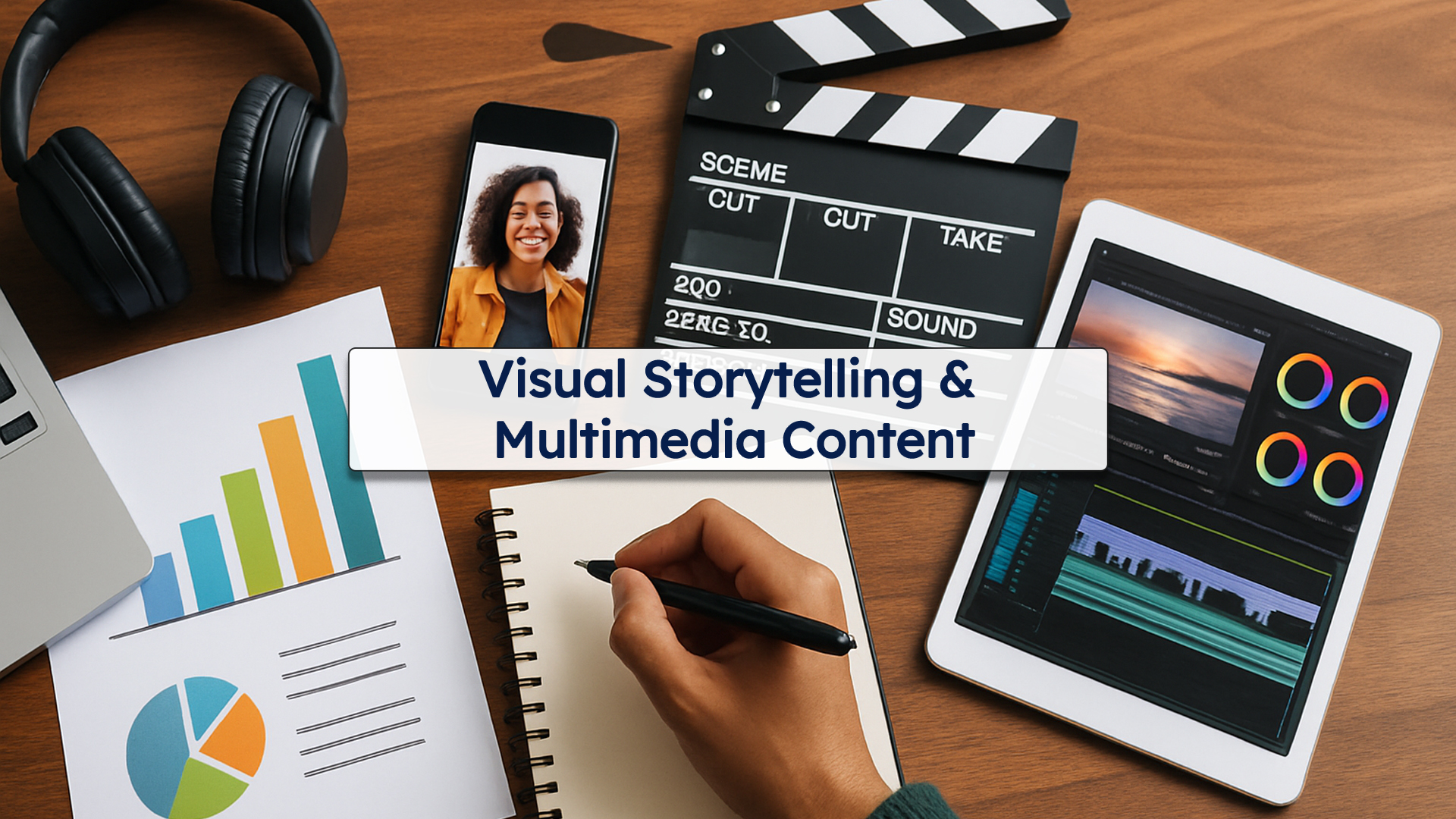In today’s hyper-digital landscape, attention is fleeting, and content is everywhere. The battle isn’t just about telling your story—it’s about making your audience feel it. That’s where visual storytelling and multimedia content come into play.
What Is Visual Storytelling?
Visual storytelling is the art of communicating messages and narratives through visual media—photos, videos, infographics, animations, and more. It goes beyond aesthetics; it’s about using visual cues to evoke emotions, clarify complex ideas, and build lasting connections with your audience.
Why Visuals Matter More Than Ever
- 90% of information transmitted to the brain is visual
- Visuals are processed 60,000x faster than text
- Content with visuals gets 94% more views
These stats aren’t just impressive—they’re a call to action. If your brand isn’t leveraging visuals, you’re likely being overlooked.
Multimedia Content: The New Language of Engagement
Multimedia content combines various formats—text, visuals, video, audio, and interactive elements—to tell a richer, more immersive story. Think podcasts with animated transcriptions, blog posts with interactive infographics, or social media reels that mix motion graphics with music.
Benefits of Multimedia Content:
- Higher engagement: Keeps users on your platform longer.
- Improved retention: Viewers retain 95% of a message when watched in a video, versus 10% when read.
- Accessibility: Appeals to different learning styles and preferences.
Real-World Applications
- Brands: Nike’s “You Can’t Stop Us” video campaign didn’t just sell shoes—it told a story of resilience and unity through powerful split-screen editing.
- Journalism: The New York Times frequently integrates data visualizations and interactive maps to deepen reader understanding.
- Education: Platforms like Khan Academy use animated tutorials to simplify complex concepts.
Tips for Mastering Visual Storytelling
- Start with the story, not the tool: Know the narrative before choosing the format.
- Use authentic visuals: Stock images are easy, but custom content builds trust.
- Keep it simple: Don’t clutter. Every element should support the story.
- Optimize for mobile: Most content is viewed on phones—design accordingly.
- Be consistent: Visual branding (colors, fonts, style) should align across all media.
Tools of the Trade
- Canva / Adobe Express – Quick, intuitive graphic design
- Premiere Pro / Final Cut Pro – High-quality video editing
- Lumen5 / Animoto – Turn blog content into engaging videos
- Figma / Adobe XD – Interactive storytelling & prototyping
Final Thoughts
In a world drowning in content, telling your story isn’t enough. You need to show it—clearly, creatively, and consistently. Visual storytelling and multimedia content aren’t just nice-to-haves; they’re essential tools in modern communication. Use them wisely, and your audience won’t just scroll past—they’ll stop, watch, and remember.


